P-3 Orion
The P-3 Orion is a land-based, long-range, anti-submarine warfare patrol aircraft, in operation since the 1960s. The current model, P-3C Update III, and the signals intelligence variant, the EP-3E Aries, are still in service and performing missions all over the world.
It was intended to replace the piston-engined Lockheed P2V Neptune (later redesignated P-2) and Martin P5M Marlin (later redesignated P-5).
Lockheed based the P-3 on the L-188 Electra commercial airliner. The aircraft is easily distinguished from the Electra by its the tail stinger or "MAD Boom", used for the magnetic detection of submarines.
 U.S. Navy P-3 Orion in flight (US Navy Photo) |
Over the years, the Orion has seen numerous design developments, most notably in its electronics packages. Numerous navies and air forces around the world continue to use the P-3, primarily for maritime patrol, reconnaissance, anti-surface warfare and anti-submarine warfare.
A total of 757 P-3s have been built. Early models included the P-3A and P-3B, and later the P-3C. With more than 400 aircraft worldwide flown by 21 operators in 17 countries, the P-3 remains a relied-upon asset in 2020.
The Boeing P-8 Poseidon now in production and deployment to the Navy, will eventually replace the remaining P-3C aircraft in the Navy fleet.
General Characteristics
- Primary Function: Anti-Submarine warfare and Anti-Surface Warfare
- Contractor: Lockheed Martin Aeronautical Systems Company
- Propulsion: Four Allison T-56-A-14 turboprop engines (4,600 hp each)
- Length: 116.7 feet (35.57 meters)
- Height: 33.7 feet (10.27 meters)
- Wingspan: 99.6 feet (30.38 meters)
- Weight: Maximum takeoff, 139,760 pounds (63,394 kilograms)
- Airspeed: 411 knots; Cruise, 328 knots
- Ceiling: 28,300 feet (8,626 meters)
- Range: 2,380 nautical mile radius; for three hours on station at 1,500 feet, 1,346 nautical miles
- Crew: Three pilots, two naval flight officers, two flight engineers, three sensor operators and one in-flight technician
- Armament: AGM-84 Harpoon, AGM-84K SLAM-ER, AGM-65F Maverick missiles, Mk46/50/54 torpedoes, rockets, mines and depth bombs
P-3 Orion Photographs (Courtesy of the U.S. Navy)
U.S. Navy P-3C Orion 294 in flight |
 |
U.S. Navy P-3C Orion 291 parked on the taxiway |
 |
P-3 Topside View |
P-3 Underside View |
U.S. Navy P-3A in early color scheme |
 |
U.S. Navy P-3B Orion in flight |
 |
U.S. Navy P-3C Orion 320 preparing for takeoff |
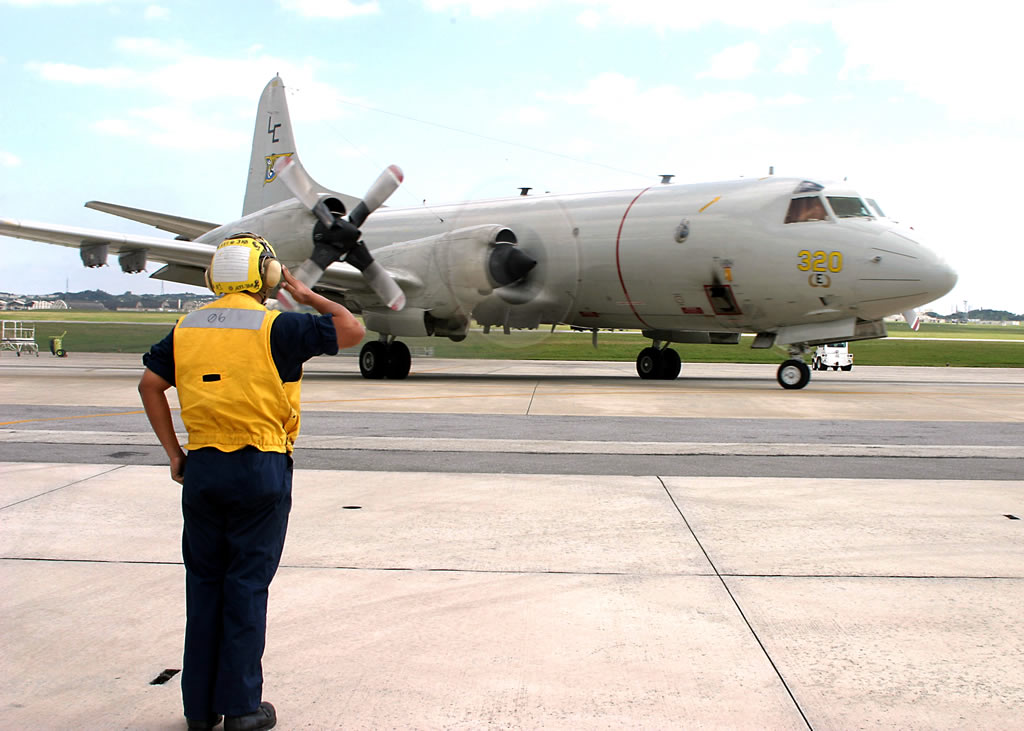 |
P-3 Orions of the U.S. Navy and allied nations |
 |
U.S. Navy P-3 Orions in Storage at AMARG
 U.S. Navy P-3C Orion BU 158206 arriving at AMARG from Whidbey Island, WA, October 1, 2013 (Photo by 309th AMARG) |
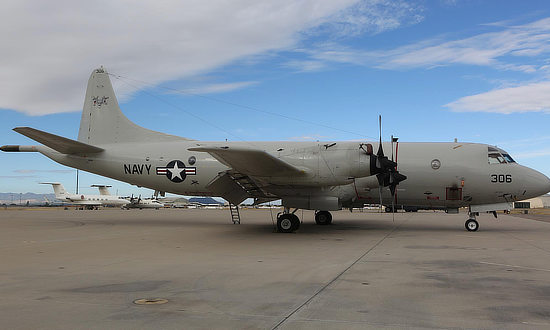 U.S. Navy P-3C Orion BU 161412 at the AMARG facility at Davis-Monthan AFB in Tucson, Arizona (Photo by 309th AMARG) |
 U.S. Navy P-3 Orion on AMARG Celebrity Row |
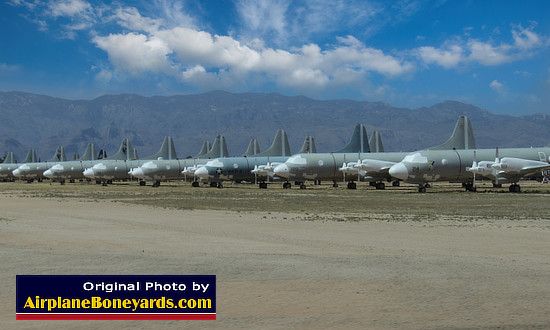 U.S. Navy P-3 Orions in storage at AMARG |
The Basis for the P-3 Orion: Lockheed Electra
Lockheed Electra - National Airlines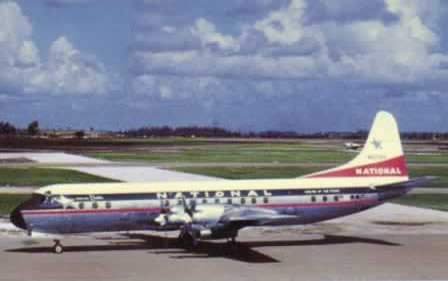 |
Lockheed Electra - American Airlines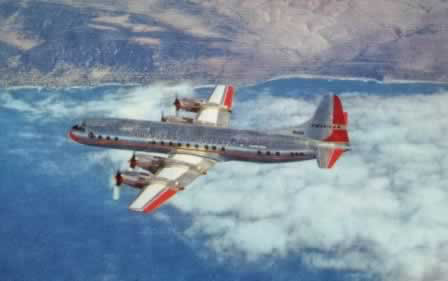 |

